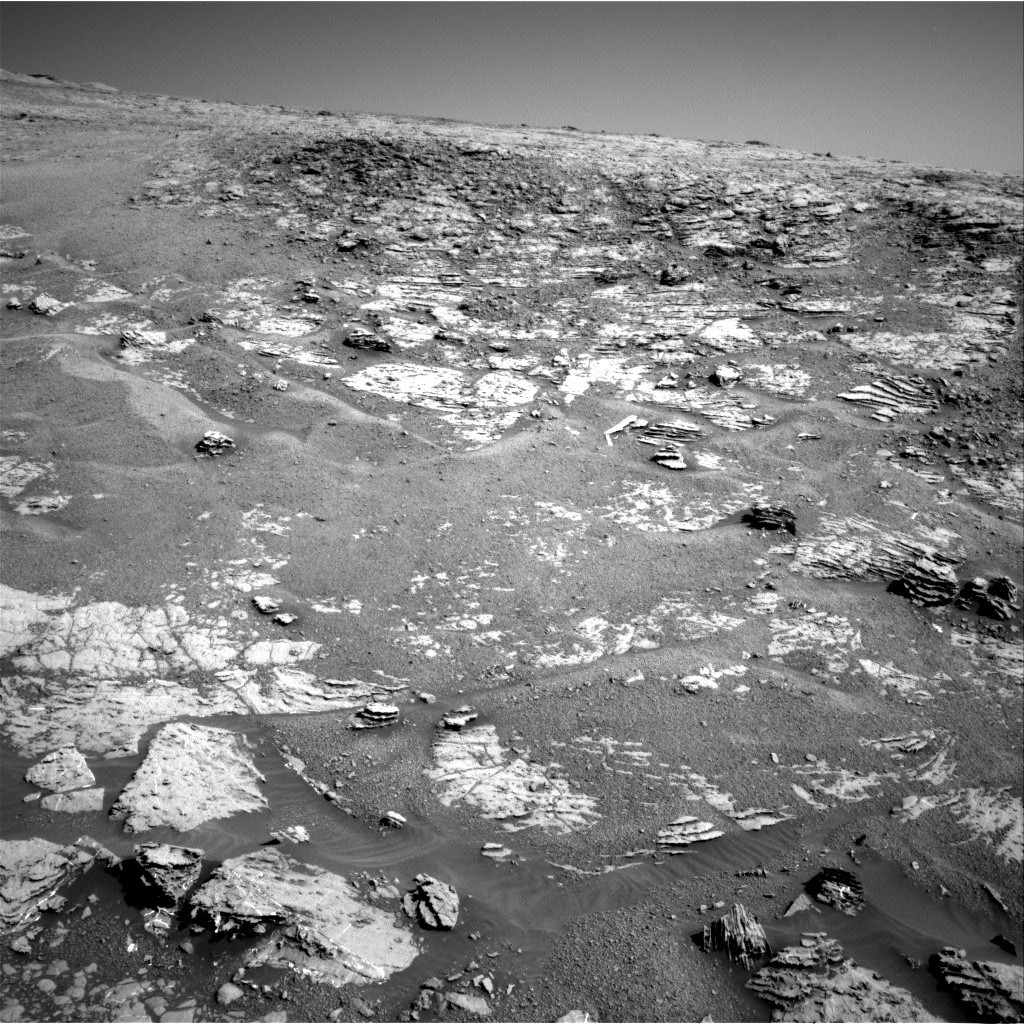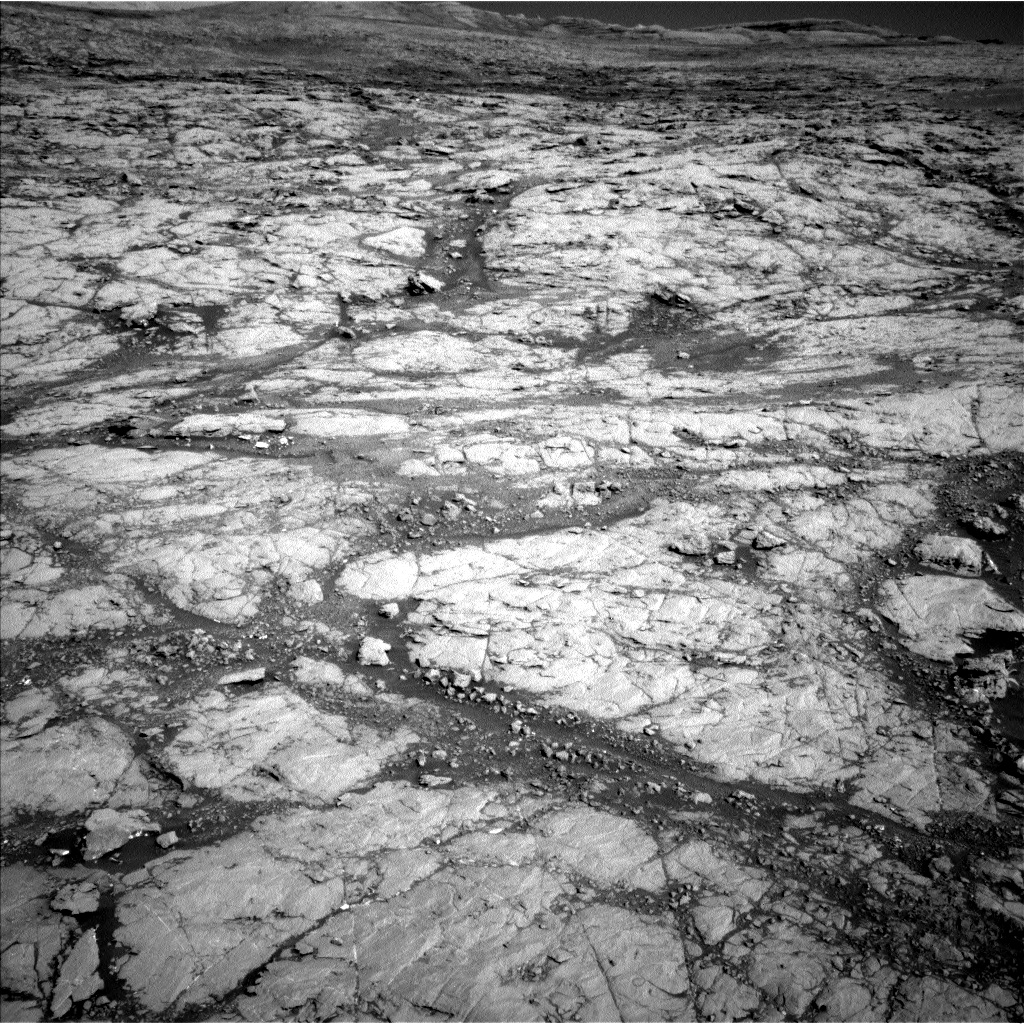On Sol 1864, Curiosity successfully got a move on from her inadvertent layover stop, which presented the science team with a new workspace, and a new view of the structures exposed in the "Vera Rubin Ridge." The team grabbed as many observations of this new piece of real estate as they could fit in the plan, not only because they were happy with the change of scenery, but because the plan is to drive once again this weekend!
Both MAHLI and APXS will look at the targets "Barberton" and "Campbellrand" using somewhat unusual techniques. MAHLI will image both Barberton (a patch of bedrock with a rough, nodular texture) and Campbellrand, a smooth patch of Vera Rubin Ridge bedrock at night using her white light LEDs to illuminate the target. The choice of night imaging was driven by the poor workspace illumination expected at the more-typical daytime imaging times. When Curiosity is parked facing eastern headings, as she was today, the rover arm and body cast shadows on the workspace in front of the rover. Shadows across MAHLI images make it more challenging to see the color and texture of the targets. MAHLI's white light LEDs are not quite bright enough to use during the day to fill in these shadows, but in the dark of night, they illuminate targets brightly, giving the team an unfettered look at their rocks of interest.
APXS will analyze Barberton using their raster technique. In a raster, APXS is placed at multiple spots, each slightly offset from one another, over a target that is hypothesized to have at least two different chemical components. In the case of Barberton, these two different components are the background bedrock and the material producing the nodular texture. The slightly different spots measured by APXS yield slightly different chemistries. By using the MAHLI images that accompany each APXS analysis to determine how much of each component is within each spot, the chemistry of the components can be separated from one another. Barberton chemistry will also be probed by ChemCam before MAHLI and APXS look at it.
Mastcam had many new features and structures to look at even just 25 m away from our last stop. South and east of Curiosity were two prime mosaic targets: bedrock exposures identified from orbit, which proved even more interesting on the ground. Stereo imaging of both these areas will allow the team to measure the bedding orientations in this part of the Vera Rubin Ridge, perhaps gaining more clues to its origin. Mastcam will also turn her filters on one of these bedrock areas to probe its iron mineralogy. Smaller, closer targets of interest for Mastcam were also available including "Belingwe" (a vertical exposure of nodular bedrock) and "Bergersdorp" (a resistant bedrock layer).
The environment-minded members of the science team planned a suite of observations - movies looking for clouds and dust devils, and images assessing the dust load in the atmosphere - at three different times of day throughout the weekend. Taking measurements at multiple times of day helps the team understand how the Martian atmosphere behaves throughout the course of a sol in Gale.
After the successful completion of all these activities, Curiosity will drive ~22 m further up the ridge toward another bedrock exposure of interest. Here's hoping the new vistas keep coming!





